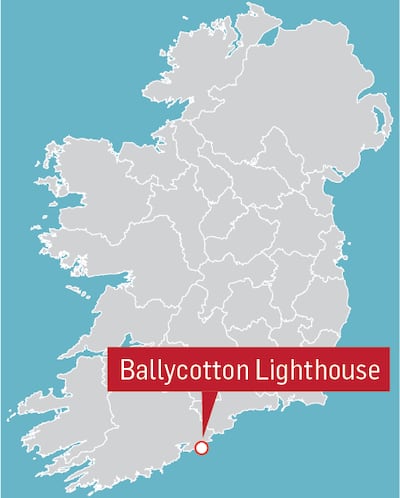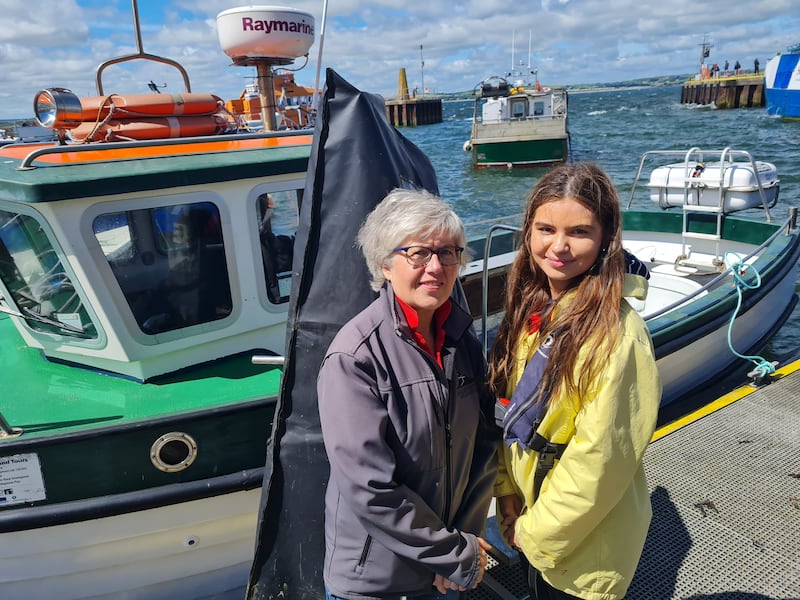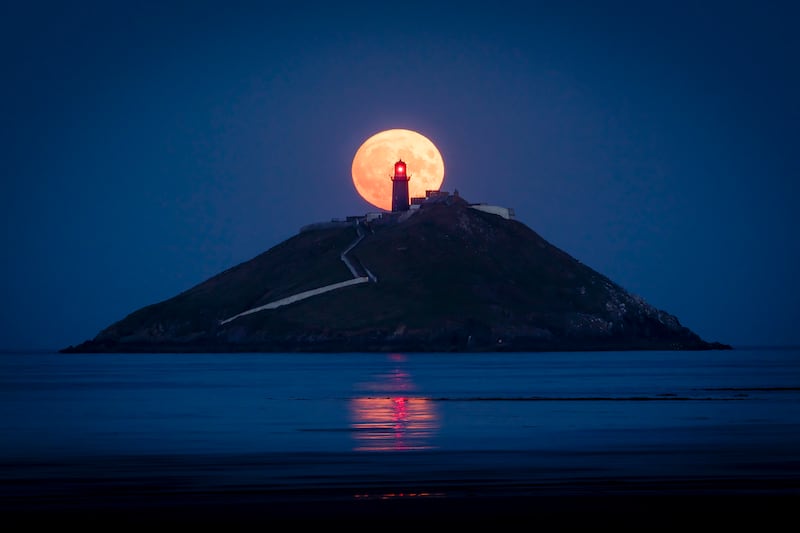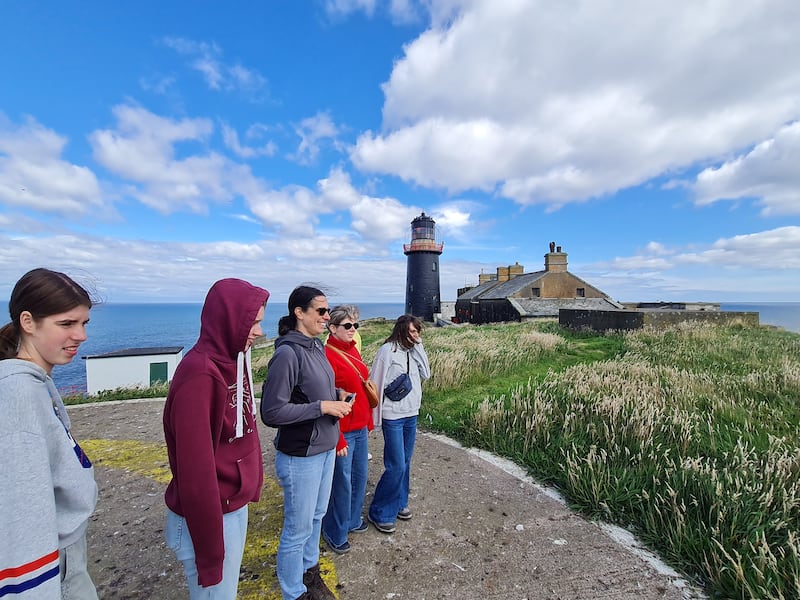For centuries, Ireland’s lighthouses have stood strong against raging storms, offering a beacon of hope for sea travellers and carrying a strange fascination for those on land. In a new series, The Irish Times visited some of Ireland’s most notable lighthouses, including Blacksod, Fanad, Ballycotton, Hook, and Wicklow Head, to learn about their fascinating histories and how their roles have changed in the modern era.
Visitors over the years to the picture postcard village of Ballycotton in east Cork could not but have been intrigued by Ballycotton Lighthouse. Strikingly black against the blue sky, it lies less than 2km from the shore but was inaccessible until recently, meaning it remained a mystery to most.
Now, thanks to Ballycotton Sea Adventures, who run guided trips to the near four-hectare island during the summer months, visitors can have their questions about the lighthouse answered in a fascinating 90-minute tour.
Ballycotton gets its name from the Irish, Baile Choitín – Town of the Small Boats –, and tour boat Yassy is exactly that, licensed to carry 10 passengers. In the expert hands of skipper and former fourth-generation lighthouse keeper Gerry O’Byrne, she reaches the island in jig time.
RM Block
There may have been a nice swell on the day The Irish Times visited but the rolling waves were hardly noticed as tour guide Claire Whelan, lifejacketed, like all aboard, engaged her audience, made up mainly of the Tuytten family from Belgium who now live in Midleton.
Whelan found holding the interest of the younger Tuytten children was eased hugely by their excited reaction to seeing Ronan the Seal swimming around the narrow cliff-sided inlet where O’Byrne expertly berthed the boat for disembarkation.
The path to the lighthouse, almost 60m above sea level, is steep but not impossible and, at a bend called the Elbow, there are stunning views across the bay to the beach at Garryvoe and beyond to the Comeraghs, the Knockmealdowns and, on a clear day, the Galtees.

At the lighthouse, Whelan explained the history of the beacon, one of 70 lighthouses around Ireland operated by the Commissioners of Irish Lights and one of 12 that make up the Great Lighthouses of Ireland, a new all-island tourism initiative opening them up to visitors.
“Back in the 19th century there was no lighthouse between Hook Head in Wexford and the Old Head of Kinsale. And so to make it safer for ships, it was decided to build two lighthouses – one at Mine Head near Ardmore, and the merchants of Youghal pushed for the other on Capel Island,” says Whelan.
“Work started on the lighthouse at Capel Island near Youghal but in 1847, the paddle steamship Sirius – the first ship to cross the Atlantic under steam in 1837 – went aground in thick fog on a reef of rocks off Ballycotton called the Smiths, and 20 lives were lost.”
The Sirius tragedy led to a rethink and work on the Capel Island lighthouse was halted. Work began on building a lighthouse on Ballycotton Island in 1848 and it was completed within 2½ years.
“The lighthouse was designed by a man called George Halpin, who was responsible for building almost 60 lighthouses around Ireland in the first half of the 1800s, and the tower was built by William Brash from Cork, who used old red sandstone quarried on the island,” Whelan says.
“The tower was originally painted white but to distinguish it from the beacon on Capel Island, a black band was painted around the centre in 1892. It was painted completely black in 1902 and she is only one of two black lighthouses in Ireland and one of only a handful in the world.”
The gallery at the top of the tower offers a panoramic view of ocean, stretching from Mine Head, some 34km to the east, to the Old Head of Kinsale, 44km to the west. Whelan explains that every lighthouse has its own distinctive light pattern, so ship captains can distinguish between them by timing the intervals – Ballycotton’s flashes every 10 seconds. The lamp is now powered by solar panels, a far cry from the whale oil first used to light it.


Ballycotton Island had been home to a small herd of goats since the mid-19th century. They were an important source of milk and meat to the lighthouse keepers and their families. The herd was reintroduced over the past decade, to the delight of visiting groups.
The keepers lived on Ballycotton Island with their families for the first 50 years before the families moved ashore. The keepers remained on the island until 1972, when they moved off, and the tower was fully automated in 1992.

“Ballycotton was regarded as one of the tougher postings because it was close to the village – the keepers could hear the music come from the Cliff Palace Dance Hall and if they trained their binoculars or telescope on the pier, they might see their girl going for a whirl with someone else,” Whelan says.
“The keepers used semaphores, a signalling system with flags, until the 1950s to communicate with their wives ashore but the wives would check the hedges first because there was one nosy neighbour who knew semaphore and she would hide in the hedge to get all the gossip.”
Things have changed since those days and, with camera phones everywhere now, one of the most popular things for visitors to do is to stand on the helipad, 100m from the tower, and take a fun photograph of their friends pretending to push against or press down on the lighthouse.
After everyone had taken their quota of photos, Whelan and fellow guide Isobel Gillen escort the group back to the landing where O’Byrne collected the party. Soon, we were zipping back to Ballycotton with the black beacon not just high on the horizon, but also vivid in the memory.
- Sign up for push alerts and have the best news, analysis and comment delivered directly to your phone
- Join The Irish Times on WhatsApp and stay up to date
- Listen to our Inside Politics podcast for the best political chat and analysis






















